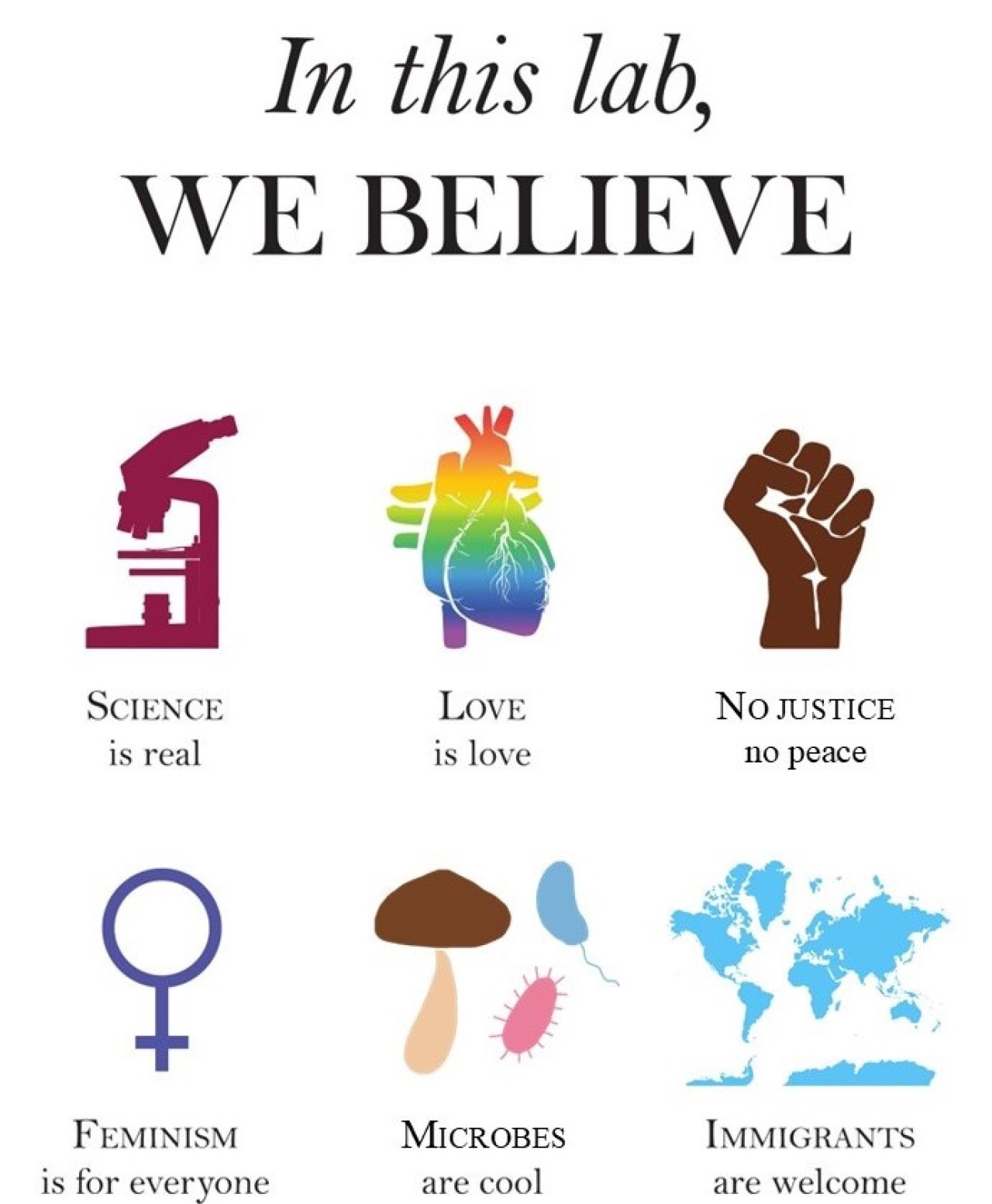Diversity and Inclusion

Our unit aims to create a safe and inclusive space for all individuals, regardless of race, ethnicity, age, disability status, sex, gender, gender identity, sexual orientation, religion, nationality, or immigration status. Beyond these recognizable diversities, we acknowledge that everyone possesses unique backgrounds and circumstances, often hidden from plain sight. These factors can include physical strength, mental resilience, socioeconomic status, and family-related constraints.
The lab and university environments must be free from harassment and discrimination; all members are expected to adhere to OIST policies. We do not tolerate any form of verbal or physical harassment, discrimination, or other inappropriate behaviors.
- The OIST Graduate School. Respectful Workplace and Anti-Harassment Policies. https://groups.oist.jp/grad/respectful-workplace-and-anti-harassment-policies
We firmly believe that fostering mutual respect is key to unlocking the full spectrum of potential among students. Diverse backgrounds, ideas, and perspectives enrich the realm of science and research, rendering them more productive, distinctive, and captivating.
- Hong, L. and Page, S.E., 2004. Groups of diverse problem solvers can outperform groups of high-ability problem solvers. Proceedings of the National Academy of Sciences, 101(46), pp.16385-16389. https://doi.org/10.1073/pnas.0403723101
- Woolley, A.W., Chabris, C.F., Pentland, A., Hashmi, N. and Malone, T.W., 2010. Evidence for a collective intelligence factor in the performance of human groups. Science, 330(6004), pp.686-688. DOI: 10.1126/science.1193147
- Yang, Y., Tian, T.Y., Woodruff, T.K., Jones, B.F. and Uzzi, B., 2022. Gender-diverse teams produce more novel and higher-impact scientific ideas. Proceedings of the National Academy of Sciences, 119(36), p.e2200841119. https://doi.org/10.1073/pnas.2200841119
We understand that systemic bias has created structural barriers which prevent all individuals from having the same opportunities in life, and in science. We are also aware that the use of English as the dominant language in science poses significant barriers for non-native speakers.
- Aara'L Yarber, 2019. What is Bias? https://serc.carleton.edu/advancegeo/resources/bias.html
- Kyogoku, D. and Wada, Y., 2023. Male applicants are more likely to be awarded fellowships than female applicants: A case study of a Japanese national funding agency. Plos One, 18(10), p.e0291372. https://doi.org/10.1371/journal.pone.0291372
- Amano, T., Ramírez-Castañeda, V., Berdejo-Espinola, V., Borokini, I., Chowdhury, S., Golivets, M., González-Trujillo, J.D., Montaño-Centellas, F., Paudel, K., White, R.L. and Veríssimo, D., 2023. The manifold costs of being a non-native English speaker in science. PLoS Biology, 21(7), p.e3002184. https://doi.org/10.1371/journal.pbio.3002184
Our ultimate goal is to transform authoritative communities into inclusive spaces where everyone feels secure, valued, and equal. This is not a passive task but one that requires active, daily engagement to create equitable, anti-racist labs, institutions, and societies.
Action Items:
- Raising awareness.
- Read a resource about systemic racism and other systemic biases in science
- Revisit and revise our Diversity and Inclusion Statement, Action Plan, and Code of Conduct
- Take an implicit bias test: https://implicit.harvard.edu/implicit/takeatest.html.
- Create a Slack channel focused on sharing ideas and resources related to diversity and inclusion
- Enhancing diversity.
- Recruit and retain students/postdocs from underrepresented groups
- Collect information on resources to support students and postdocs from underrepresented groups in the lab, such as grants and award opportunities
- Seek out a diversity of collaborators and seminar speakers who are underrepresented
- Cite a diversity of scientists in our papers
- Nominate scientists from underrepresented groups for status-elevating roles in science
- Fostering inclusivity.
- Work to ensure that everyone feels physically and psychologically safe in the workplace
- Encourage every member to share their thoughts and ideas during meetings
- Ensure that all members, especially non-native English speakers, understand the lab discussions
- Have inclusive lab events, such as welcome parties
- Commence efforts to include local communities in all fieldwork activities
- Use correct pronouns and correct name (avoid using the deadname of a colleague who has changed their name)
- Create, invite, and nurture scientific communities for underrepresented minorities
- Discuss how to minimize risks and increase comfort during fieldwork, such as by organizing a suitable fieldwork team
- Promoting equity.
- Treat all members equitably, by ensuring equal access to information and opportunities and attentively listening to and addressing each individual's needs
- Select scientific journals for submitting manuscripts that employ a double-blind review process
- Accommodate leaves, including maternity leave, if lab members need medical treatments, and support their academic careers by understanding their needs




